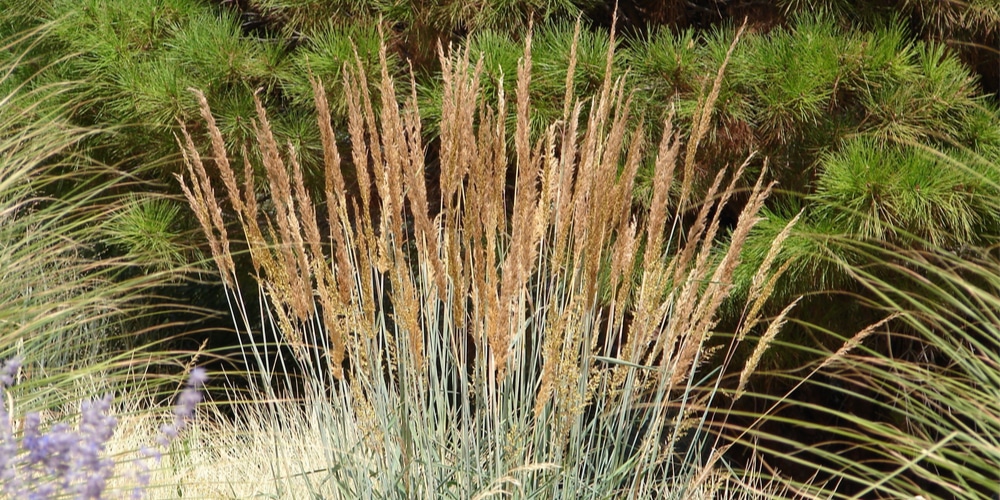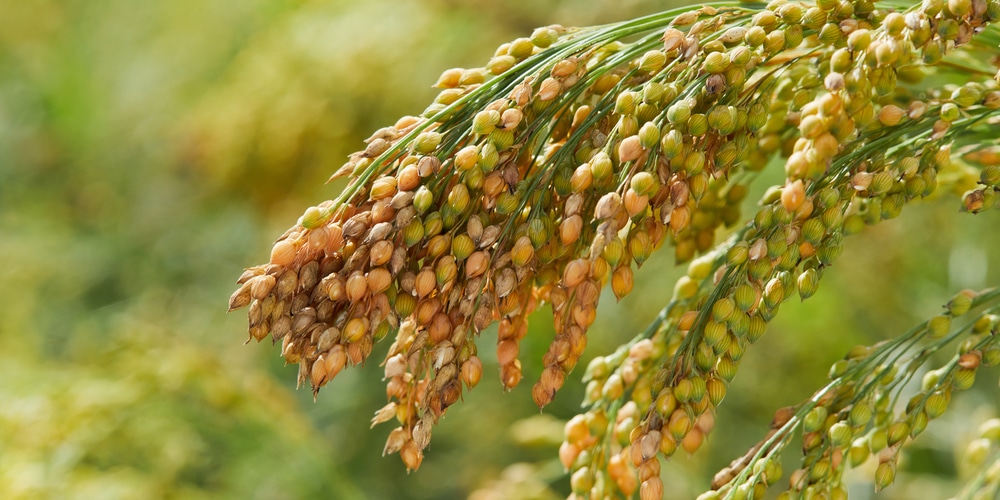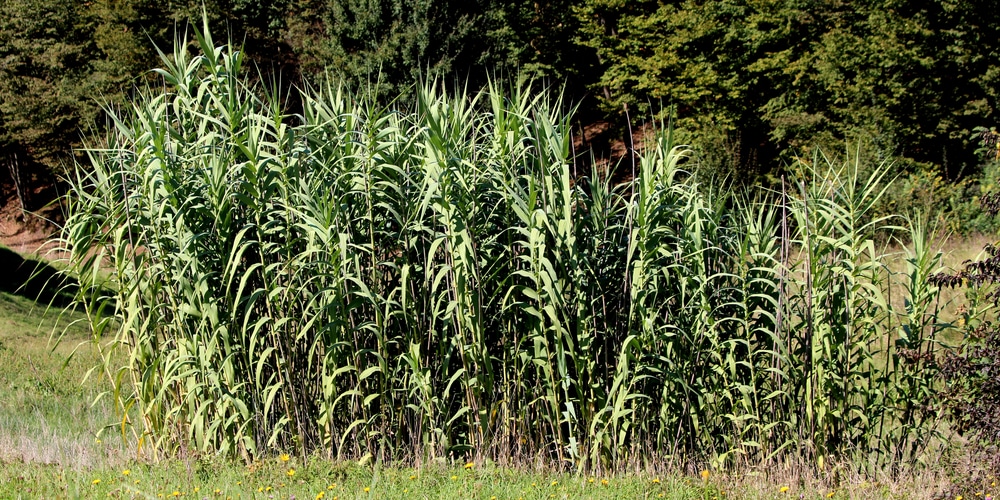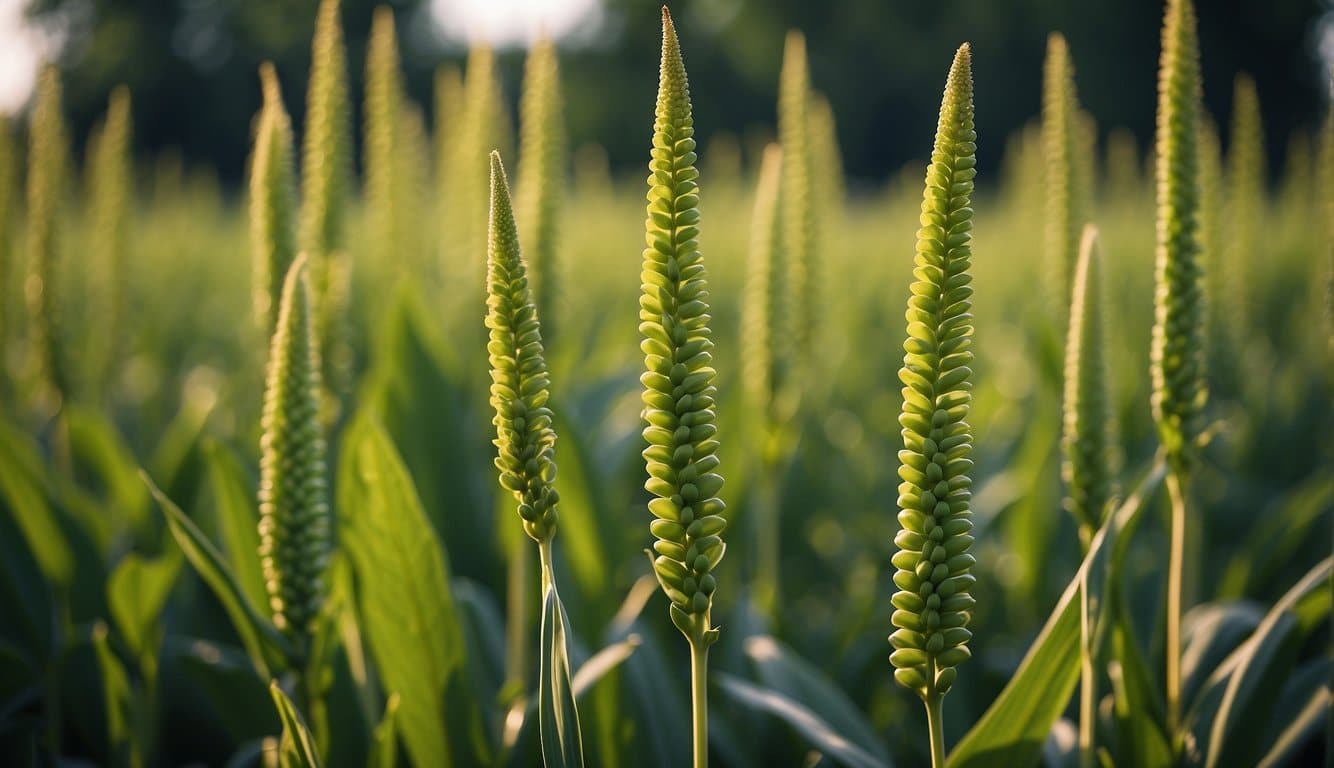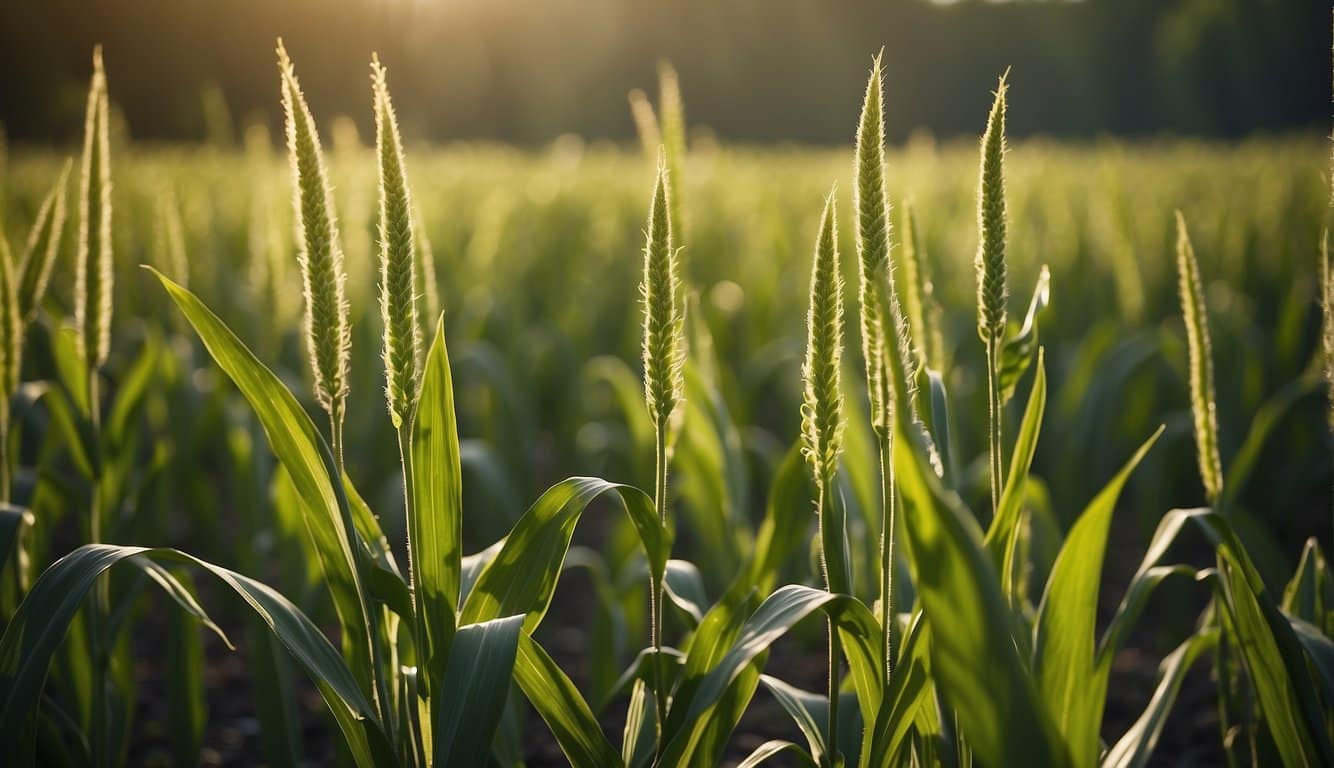Many indoor, outdoor, and weed plants look like corn but aren’t. Differentiating these plants from corn is not easy, and even some experienced farmers still need help. Do you have a garden or yard and have noticed some growth that resembles corn? Here are some plants and their characteristics.
1. Dracaena Fragrans (Massangeana)
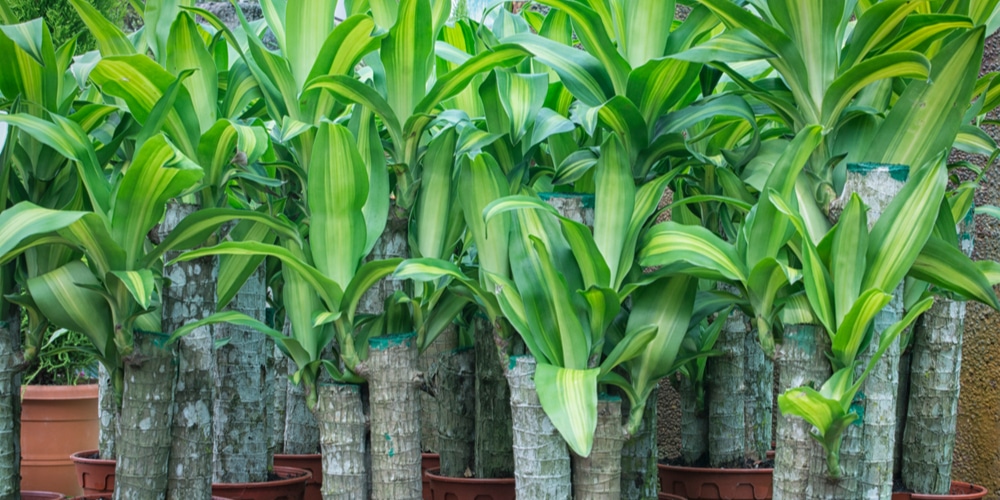
Massangeana is a house plant known as, ironically, the corn plant. It looks exactly like corn, but it is not. The plant has a stalk and a thick stem where the leaves sprout. The green foliage is similar to those of a healthy corn stalk. It also has no ears or tassels. Dracaena Fragrans are an ideal plant to grow if you want a green environment in your home or even in the yard. The seeds are easy to plant, provided you water the plant frequently. Just ensure the plant is away from direct sunlight.
At times, the house plant produces beautiful flowers like a corn plant. The blossoming flowers make any garden look spectacular.
2. Plants that Look Like Corn But Isn’t: Grain Sorghum (Milo)
Many outdoor plants resemble corn, but Grain Sorghum is the most commonly found. It perfectly resembles corn aside from the roots, which are more spread out. The plant’s growth habits and characteristics are also similar to corn.
Grain sorghum has a thick stem and a pinnacle head. The green leaves grow on the stem. Occasionally, the plant produces flowers. To some people, sorghum is a great corn alternative. It has the same nutritional benefits as corn and has more protein. Corn, however, has a higher Vitamin A content.
It takes 3-9 days to grow sorghum. All you need is well-drained soil at 60-65F and cool environments at 80F.
3. Johnson Grass (Sorghum helapense)
Johnsongrass is a fast-growing weed plant with a thick stem and green leaves with flat edges. It grows to 6-7 inches and produces flowers in May and October. The plant also has red-brown or black seeds on the roots, like corn.
Unfortunately, Sorghum helapense is a pest in the yard or garden. It is actually restricted in all USDA zones. The weed hinders other plants from healthy growth. So, whenever you spot it in your yard, pull it out immediately. You can also use a herbicide that will not affect other plants in your garden. Other weed grass plants that look like corn but need to be eradicated instantly include; giant reed, quack grass, and crabgrass as well.
4. Millet (Broomcorn)
Millet is a wild outdoor plant that is also known as broomcorn. The plant’s seedlings look exactly like corn. It has a 16-inch long head that produces its seeds. The long, curved stem of the millet plant has thin, green leaves.
There is a wide variety of millet, so you should know the problematic ones. Since millet reduces other plants’ yields and resistance to some herbicides, some farmers consider it a beneficial weed plant. It is a good substitute for sorghum or corn feed for poultry and livestock. Growing millet is relatively straightforward. You should plant the seeds not more than 12mm underground. It also demands bright sunlight, soil pH of 7.8, and sporadic watering. Millet is self-pollinating, and a mature plant takes two to three months to grow.
5. Plants that Look Like Corn But Isn’t: Arundo
Arundo is a special grass that is similar to corn in appearance. It is also a weed from Europe, also known as ornamental grass. The plant has canes and a thick stem where the leaves grow. The main difference is that Arundo has no ears or tassels.
Even though the weed grass has lush green foliage, it can be invasive to other plants in your yard. It grows best in wet soil and can withstand mild winter conditions. Arundo can grow well without water, which usually makes them grow aggressively. The roots of the weed grass live long too.
If you want to grow the plant, you can do it either indoors or outdoors.
Horticultural Significance of Corn Mimics
Understanding the horticultural significance of plants that resemble corn stalks gives gardeners and farmers insight into ornamental and agricultural opportunities.
Ornamental Uses
Plants that mimic corn stalks offer a unique aesthetic appeal in gardens and indoor settings.
The Corn Plant (Dracaena fragrans), with its arching leaves and striking resemblance to true corn, makes for an excellent ornamental indoor plant.
It’s a favorite for creating a tropical ambience in homes and offices across the United States and Europe. While it’s not edible, its visual similarity allows gardeners to diversify their plant collections with a corn-like appearance without the need for a garden space suitable for actual corn growth.
Sorghum species, albeit less common in ornamental gardening, can add vertical interest to landscapes with their tall, grass-like appearance. They can range in height from 1.5 to 3 meters, significantly impacting garden design.
Agricultural Considerations
In agricultural settings, identifying plants that resemble corn is crucial to preserve the genetic purity of corn crops and maintain clear distinctions between species.
Some plant species that look like corn might have different water and nutrient requirements or may become unintentional hosts for pests and diseases common to corn, impacting the health and productivity of a crop.
A prime example includes the various grasses and grains from the same family, which could inadvertently intermingle with corn in fields.
Farmers need to recognize these species to manage their lands effectively and prevent cross-contamination.
Understanding the life cycles and growth habits of corn-like plants can aid in planning crop rotations and other farming practices that optimize yield and land usage, while also preserving biodiversity.
Identification and Differentiation
Accurately identifying plants that closely resemble corn stalks requires attention to specific botanical characteristics.
It is important for gardeners and agricultural professionals to differentiate these plants from corn to prevent misidentification which can have implications for crop management and local ecosystems.
Leaf Structure
The leaves of corn and its look-alike species can be quite similar, but key differences in leaf structure are telling.
- Sorghum: Similar to corn, but narrower leaves and some varieties may have more pronounced leaf blades.
- Dracaena: While not a true grass, its leaves have a corn-like appearance, often with a central yellow or light green stripe.
Stem Texture
Stem texture is another distinctive feature that can aid in plant identification.
The texture can range from smooth to rough, and some species may have unique markings or colors.
- Johnson Grass: Smooth and stout, but differs from corn with a reddish hue on the nodes.
- Arundo: Tall and reedy with a texture that’s similar to corn, though the stems are somewhat glossy.
Growth Patterns
Considering the growth patterns will further help to confirm the plant’s identity.
Certain plants might mimic the height of corn but have different growing habits or seasonal life cycles.
- Miscanthus: A perennial grass that grows in clumps and can reach heights similar to corn.
- Pearl Millet: Has a robust tillering pattern and does not grow as uniformly as corn.
Frequently Asked Questions
When exploring the world of plants, enthusiasts often come across species that closely mimic others. This section addresses some of the most common inquiries on plants that can be easily mistaken for corn stalks due to their similar structural attributes.
What is a common perennial plant that bears a resemblance to corn stalks in appearance?
Arundo, also known as giant reed, is a perennial plant that significantly resembles corn stalks. It features tall, cane-like stems with long, flat leaves that may remind one of corn plants.
Which outdoor plants are often mistaken for having the same structure as corn stalks?
Grain Sorghum is frequently confused with corn stalks due to its height and foliage structure. This plant grows tall like corn and has broad leaves that wrap around the stem.
The Dracaena fragrans ‘Massangeana’, commonly known as the corn plant, is an indoor plant that shares a striking resemblance to corn stalks, with its woody stem and arching green leaves.
Can you identify a plant that resembles a corn stalk but is significantly shorter?
Johnson Grass, a shorter plant species, often gets mistaken for young corn stalks. Its leaves and shoots have a similar appearance but do not reach the same heights as mature corn.
Which weeds are most commonly confused with young corn stalks due to their similar appearance?
Quack grass is a weed commonly mistaken for young corn stalks. It has flat, long leaves that droop, and although it is shorter, it can initially give the impression of young corn.
What is the name of the flower that bears a strong resemblance to an ear of corn?
The flower known as the Cockscomb, or Celosia, bears an interesting resemblance to an ear of corn.
The flower’s unique, textured bloom can mimic the kernels on an ear of corn, with some varieties even featuring a similar coloration.
